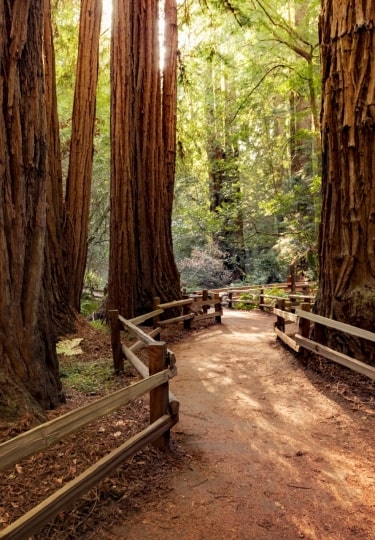From the untamed cloud forests of Costa Rica to the vast expanses of spruce, cedar, and hemlock covering the great wilderness of Alaska, spending time in beautiful forests while on vacation is a brilliant way of unwinding and communing with nature.
Forests offer plenty to see and do, too. From hiking scenic trails to spotting forest-dwelling wildlife, the most beautiful forests in the world are places of head-turning nature.
Dust off your hiking boots to discover these stunning forests.
El Yunque Rainforest, Puerto Rico
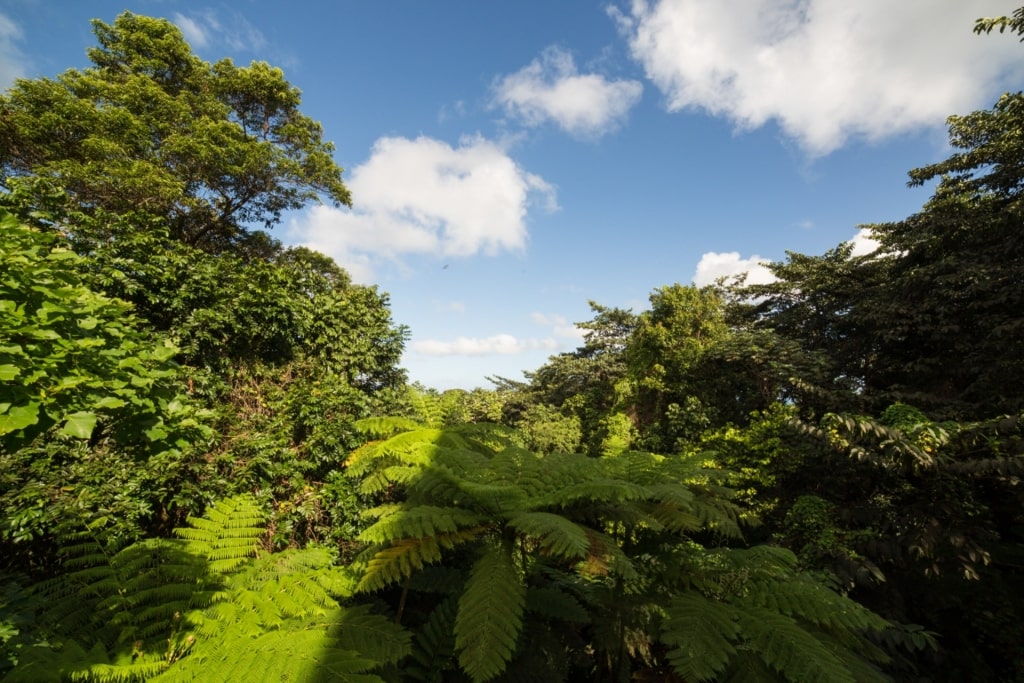
El Yunque Rainforest, Puerto Rico
The tropical El Yunque Rainforest—often found with rain clouds suspended over its treetops—lies in the east of Puerto Rico, accessible from the island’s capital, San Juan, in under an hour.
El Yunque is home to some of the best hiking in Puerto Rico, and one of the easier hiking routes is the short La Coca trail, which loops in the spectacular La Coca Falls from the Sierra Palm Visitor Center in the center of the rainforest.
Marvel at the rainforest’s thick vegetation, including giant ferns, tall palms, and trickling streams. You might spot the endangered, emerald-green Puerto Rican parrot, as well as lizards and frogs.
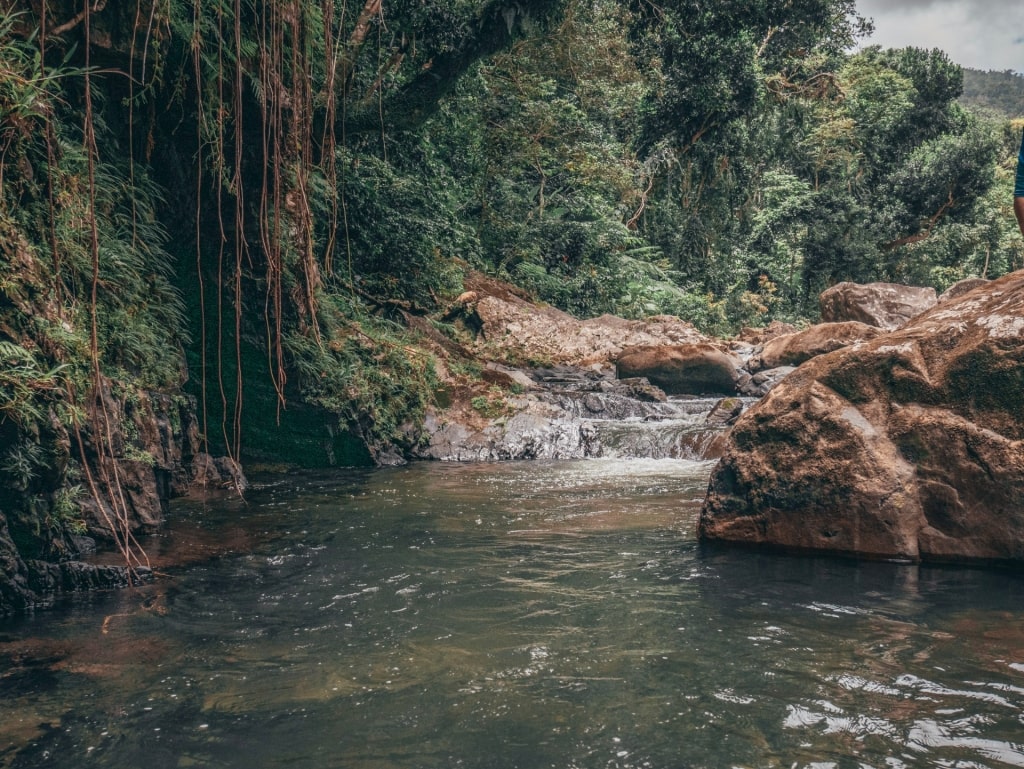
El Angelito in El Yunque Rainforest, Puerto Rico
Another easy-level hike is the El Angelito loop, which leads past towering tabonuco trees to a tranquil lagoon. Pack your swimsuit and a towel to enjoy a refreshing dip.
More experienced hikers might want to tackle the El Yunque Trail to one of the rainforest’s highest reaches, El Yunque Peak. The route is just over five miles, and reaches 1,400 feet, going deep into the tangle of vines.
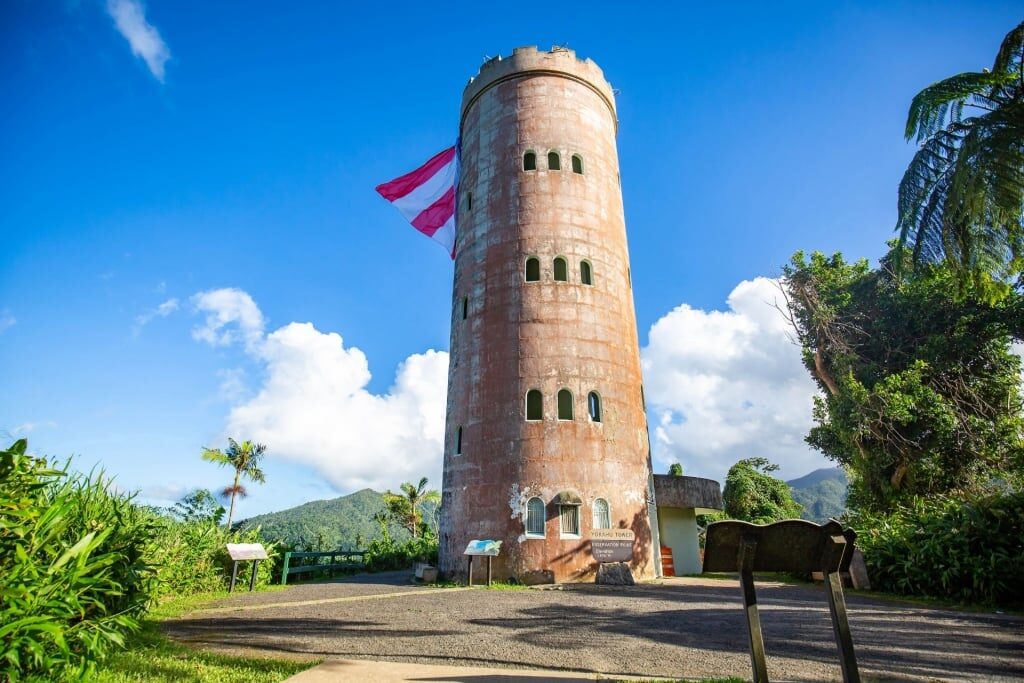
Torre Yokahú, Puerto Rico
Another high point is Torre Yokahú, or Yokahu Tower, near Juan Diego Falls. The observation point offers panoramic views of El Yunque in all directions.
Monteverde Cloud Forest, Costa Rica
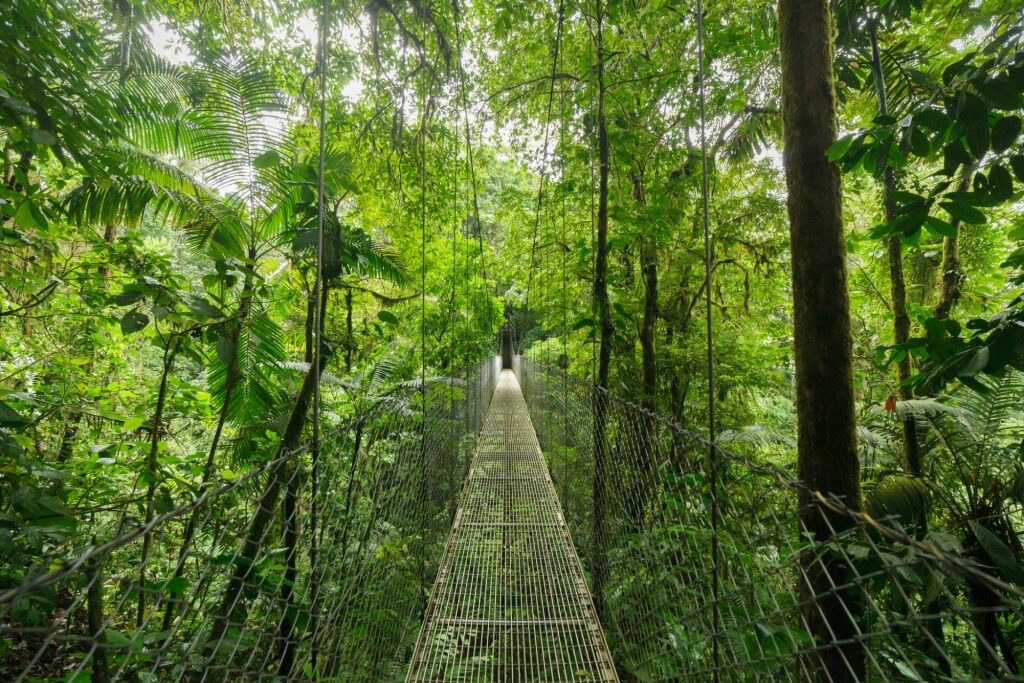
Monteverde Cloud Forest, Costa Rica
To walk in Monteverde Cloud Forest is like stepping into a wildlife documentary. This magical biological preserve, lying in northwest Costa Rica, is a tropical mountainous environment that’s a haven of colorful bromeliads, mosses, ferns, and vines.
Monteverde offers a thrilling mix of Costa Rica’s nature and adventure within its dense emerald rainforest. There are more than 400 bird species, 100 mammals, and 1,200 amphibians and reptiles that live here, including jaguars, pumas, sloths, the endangered three-wattled bellbird, and the multicolored quetzal bird.
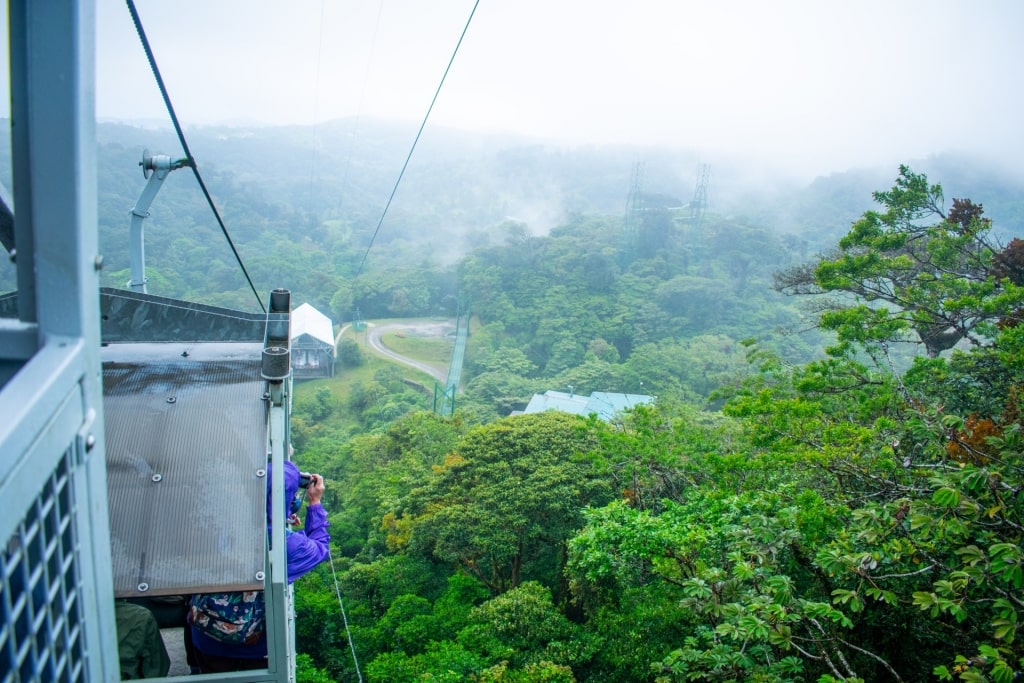
Sky Tram in Monteverde Cloud Forest, Costa Rica
To soak up as much of the misty forest’s scenery as possible, take the leisurely Sky Tram, an open-air gondola accompanied by a guide, up the mountain to reach the Sky Walk.
At the top, walk across the Cloud Forest’s series of suspension bridges through the treetops. You can opt to descend via a return gondola or the hair-raising zip-line that sees participants fly over the bush.
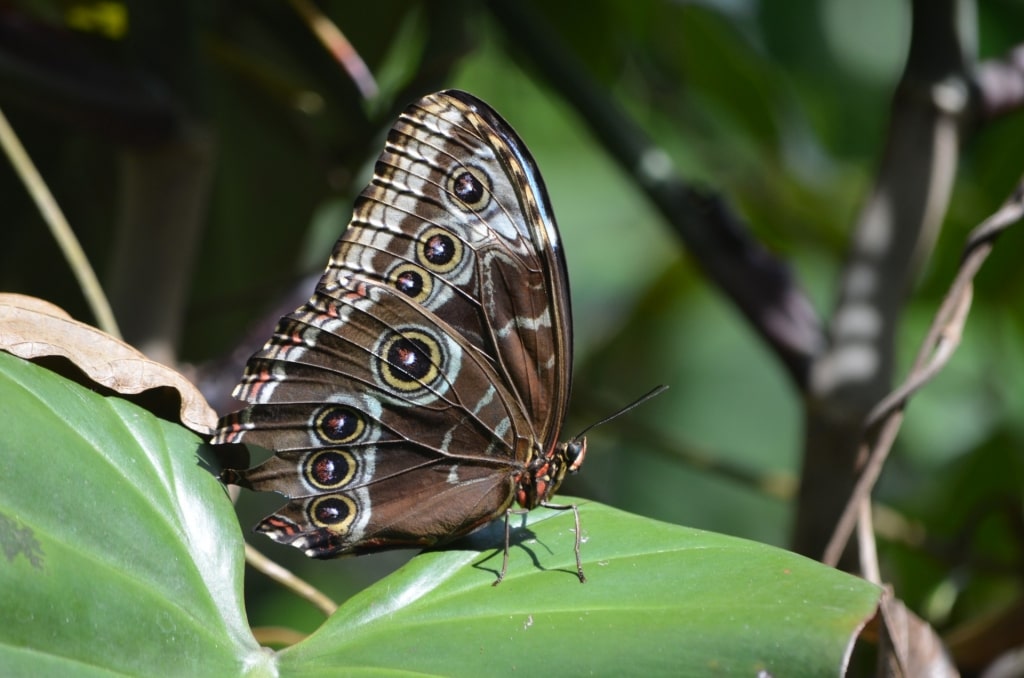
Blue morpho butterfly in Costa Rica
There’s more, with butterfly gardens, a wildlife refuge, a bat jungle, orchard gardens, and local restaurants scattered around Monteverde.
Muir Forest, California
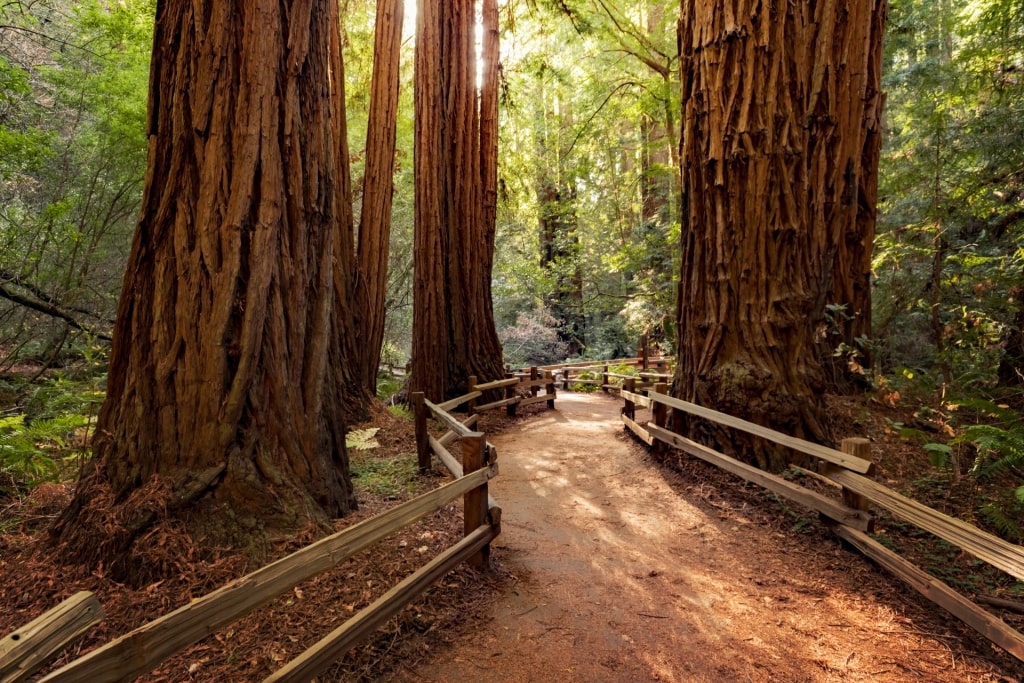
Muir Forest, California
Humbling coastal redwoods, some as tall as 258 feet, with towering, rust-colored trunks dominate Muir Forest, one of the most unique places to visit in California.
Lying around 20 minutes north of San Francisco via the Golden Gate Bridge, Muir Forest is an easy-to-reach forest that is often swathed in ocean mist. Muir is an extension of California’s Golden Gate National Recreation Area, a marine forest next to the Pacific Ocean.
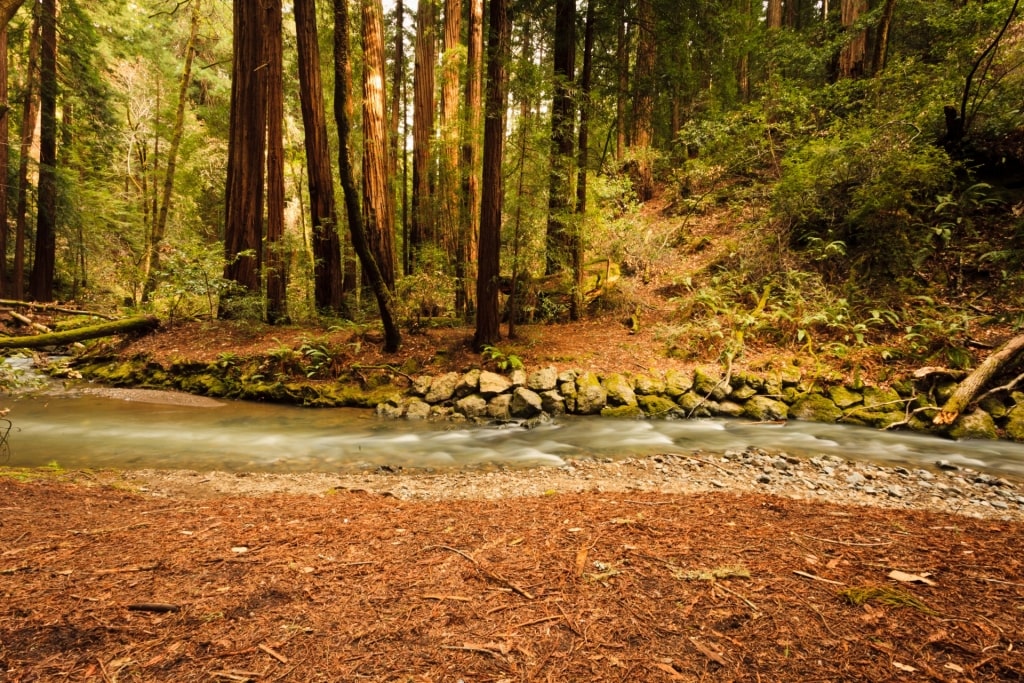
Redwood Creek in Muir Forest, California
There are six miles of hiking trails starting from Muir Woods Visitor Center, weaving through the sky-scraping trees The shortest is a 30-minute trek that follows Redwood Creek.
The longest is the Muir Woods to Stinson Beach route, via Muir Beach lookout, unfolding 11 miles and taking around seven hours.
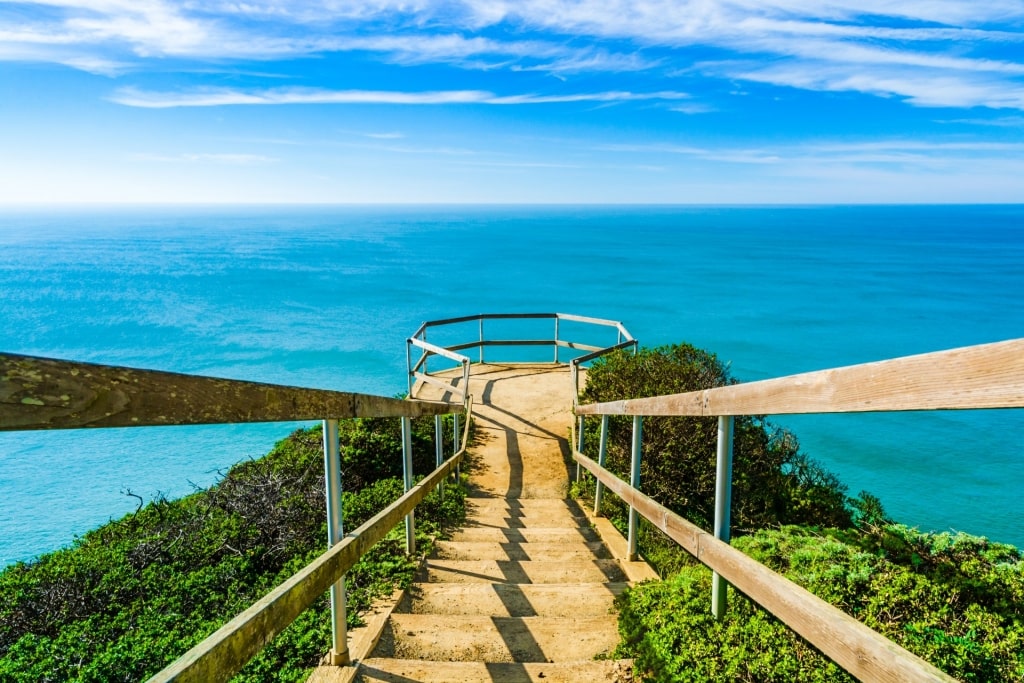
Muir Beach lookout, California
Other options include one-hour and 90-minute loops through the lush Fern Creek through a redwood canyon. Another rewarding option is to hike three and a half miles to Muir Beach lookout.
You could make your way down to the peaceful cove, via the 450-foot-long pedestrian bridge, or simply soak up the commanding views of the rugged Pacific coastline from the lookout. All trails are clearly marked via an asphalt or boardwalk path.
Daintree Rainforest, Australia
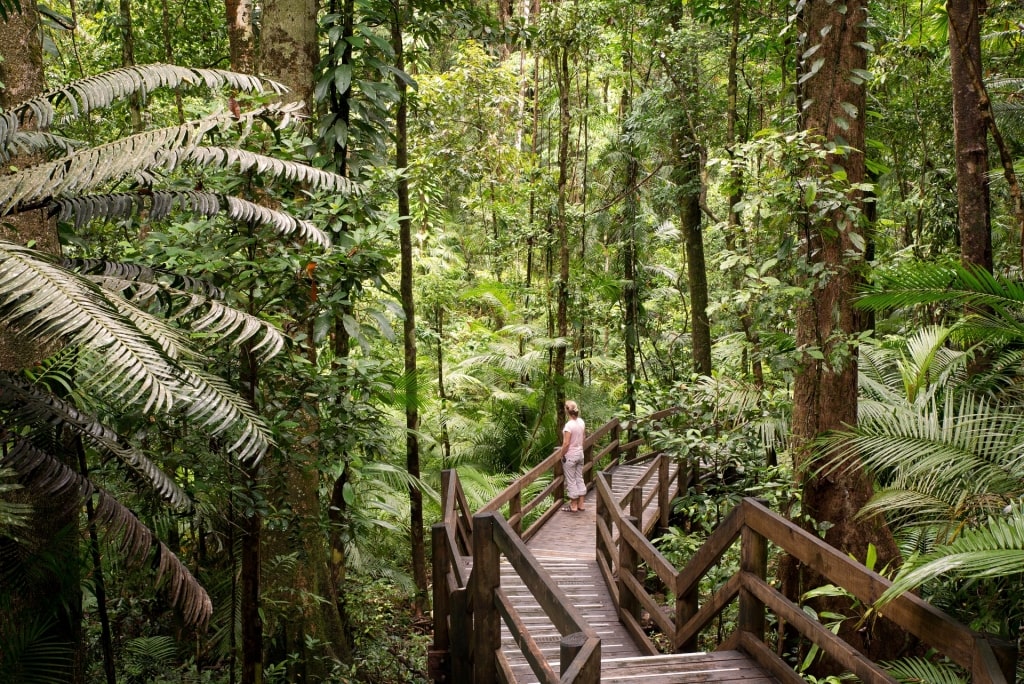
Daintree Rainforest, Australia
Vast green canopies, drooping vines, untouched beaches, and crocodile-inhabited rivers make Daintree one of the most beautiful forests in the world. Dating back 180 million years, it’s also the oldest tropical rainforest on the planet.
Lying 20 minutes from Port Douglas in Far North Queensland, Daintree was once described as “the most extraordinary place on Earth” by broadcaster and naturalist Sir David Attenborough.
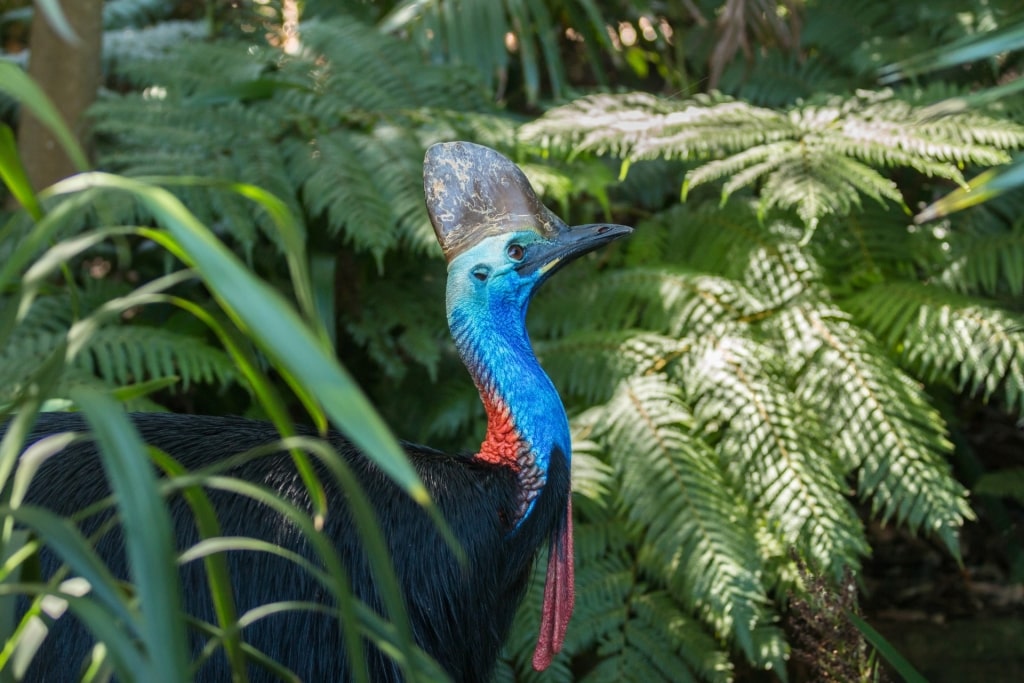
Cassowary
The rainforest is home to a jungle of around 3,000 plant species, most reaching for the sky to grasp at sunlight. Daintree’s animal kingdom is as impressive as its vegetation, with languid crocodiles, white-lipped tree frogs, flying foxes, and a whole spectrum of lizards and spiders.
You’ll know if you spot the endangered Cassowary, a giant flightless bird, by its blue-violet neck and dark plumage.
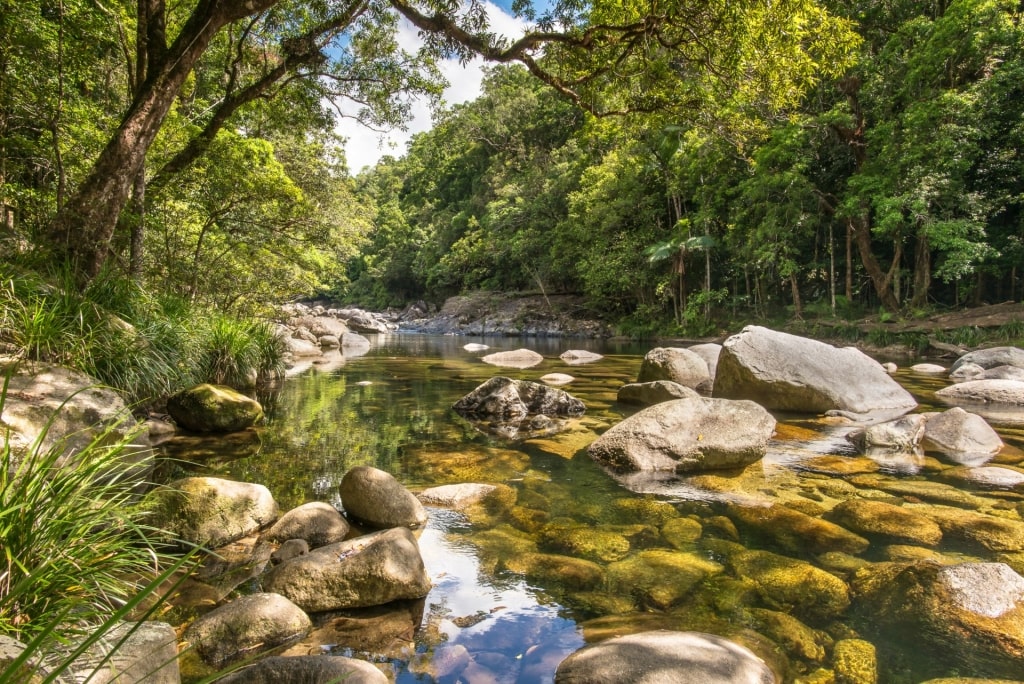
Mossman River in Daintree Rainforest, Australia
The rainforest’s southern entrance is located in Mossman, a town on the Mossman River, a region known for its sugar-cane farming. Travelers can take a shuttle from Mossman to Mossman Gorge and its cultural center to begin a guided or self-guided walk of this tropical region.
Follow the crystal-clear, boulder-filled Mossman River along the elevated boardwalks to see flowering orchids and king ferns.
The Kuku Yalanji people officially took ownership of Daintree National Park in 2021. To gain a greater understanding of their culture, take a guided Ngadiku Dreamtime Walk led by members of the Indigenous community.
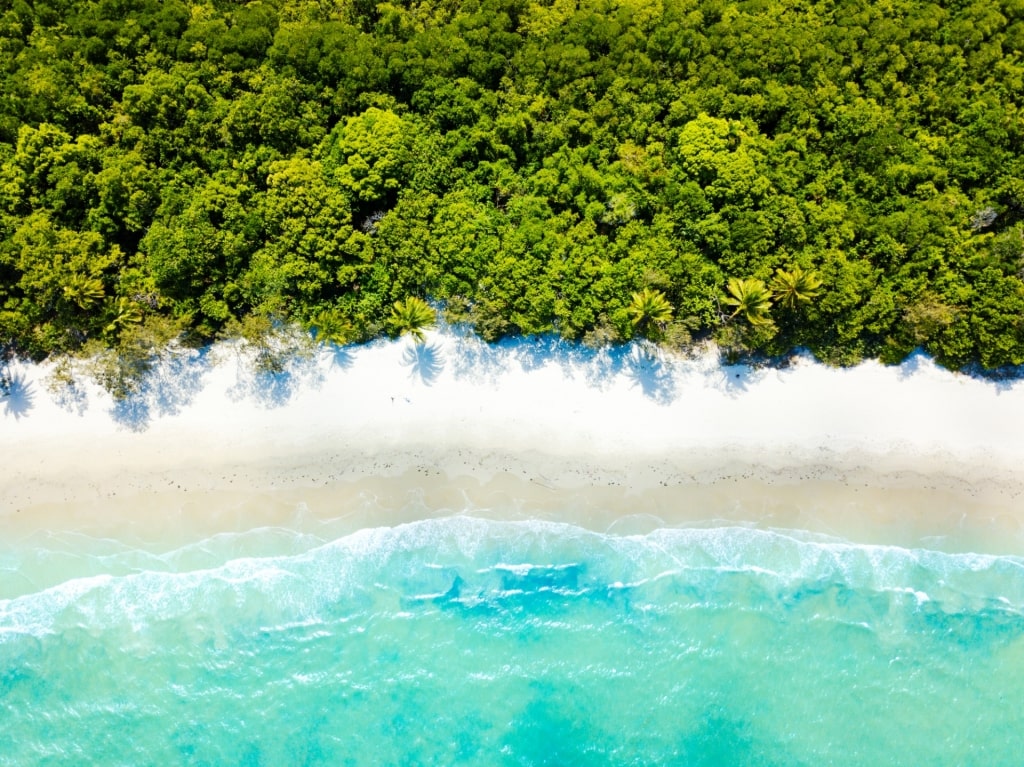
Cape Tribulation Beach in Daintree Rainforest, Australia
On the northern side of the rainforest, in the village of Daintree, is Daintree Discovery Centre. Visitors here can ascend the 75-foot Canopy Tower towards the treetops for imposing views.
You can also board a ferry to cross the Daintree River to reach Cape Tribulation Beach, a remarkable spot where the rainforest meets the Great Barrier Reef.
Arashiyama Bamboo Grove, Japan
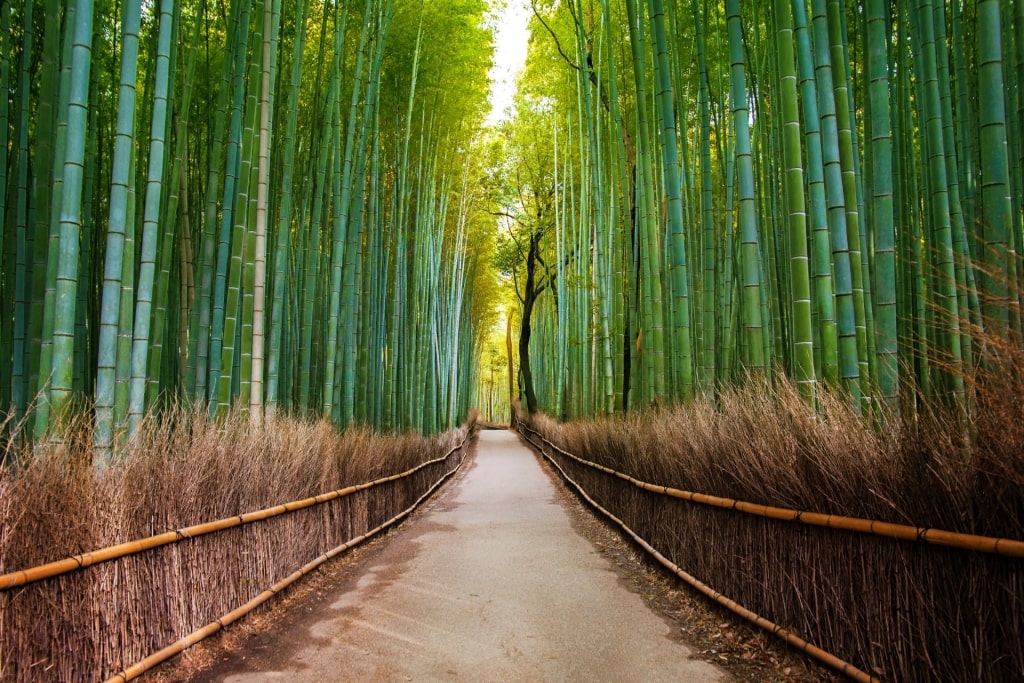
Arashiyama Bamboo Grove, Japan
Journey to Japan’s ethereal Arashiyama Bamboo Grove, a few miles west of central Kyoto, considered one of the most beautiful forests in the world for its gangling stalks of bamboo.
This soothing forest is defined by bamboo columns that gently sway, creating an otherworldly landscape with a single path weaving through the grove.
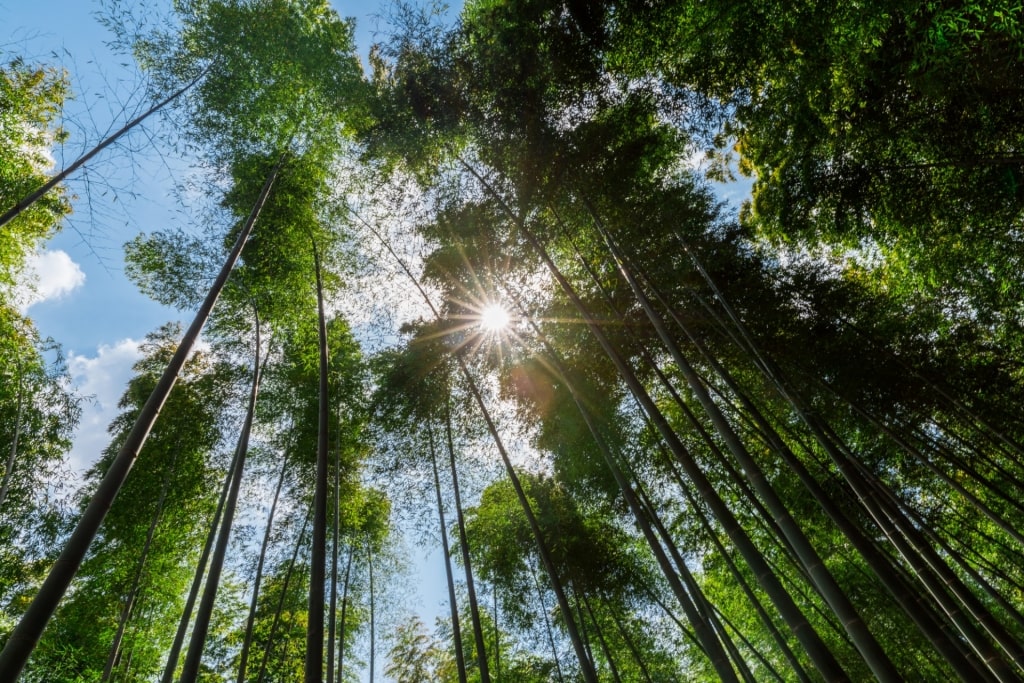
Arashiyama Bamboo Grove, Japan
The forest is located in the delightful district of Arashiyama on the Katsura River, where there are cafés, restaurants, and temples to explore.
After visiting the bamboo grove, discover the eighth-century Hōrin-ji Temple, dedicated to Ākāśagarbha, and the sprawling Tenryu-ji Temple, set in exquisite gardens.
Spring and fall are the best times to visit Arashiyama Bamboo Grove. Candyfloss-hued sakura blossoms fill the trees of Arashiyama’s Kameyama Park from late March, while leaves turn a spectrum of auburn, bronze, red, and gold during fall in Japan.
Glenariff Forest Park, Northern Ireland
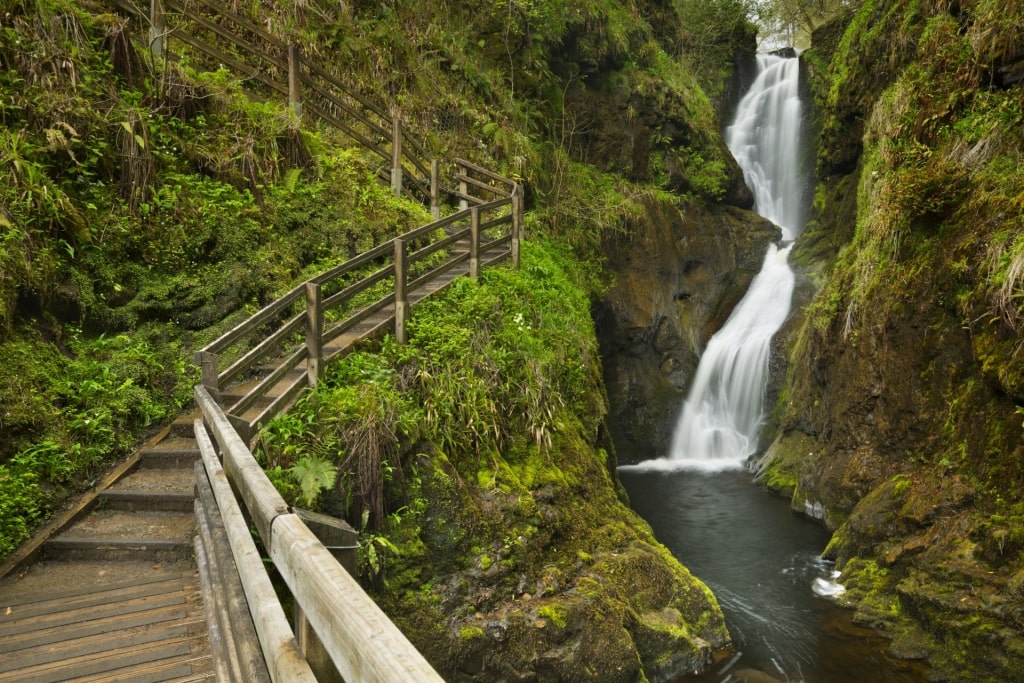
Glenariff Forest Park, Northern Ireland
Lying midway between the UNESCO-listed Giant’s Causeway and the city of Belfast, Glenariff is a wonderful forest in County Antrim, Northern Ireland. The park is home to a rich diversity of planted woodland with fern gullies, rivers, and waterfalls, making it a great spot for an adventurous walk or horseback ride.
There are several walking routes to choose from, ranging from the Rainbow Trail of just a few thousand feet to the five-and-a-half-mile Scenic Trail.
A wooden boardwalk winds through part of the glen that walkers are required to follow, to help protect the wildlife, including the red squirrel and Irish hare.
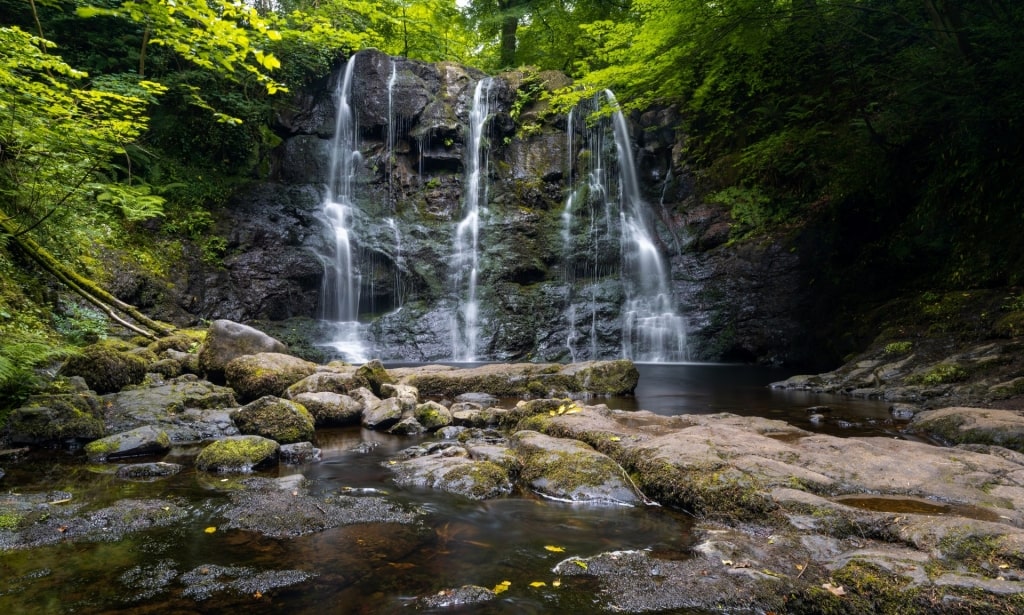
Ess-Na-Crub Waterfall in Glenariff Forest Park, Northern Ireland
Opt for the 1.8-mile Waterfall Walk Trail to see Ess-na-Larach on the Glenariff River and Ess-Na-Crub on the Innver River, the two most picturesque waterfalls in Glenariff Forest Park.
There’s a cafe, Glenariff Teahouse, located by the park’s parking lot, for a selection of homemade cherry scones, fruit pie, and ginger cake with copious amounts of hot tea.
Read: What Is Ireland Known For?
Gotjawal Forest, Jeju Island, Korea
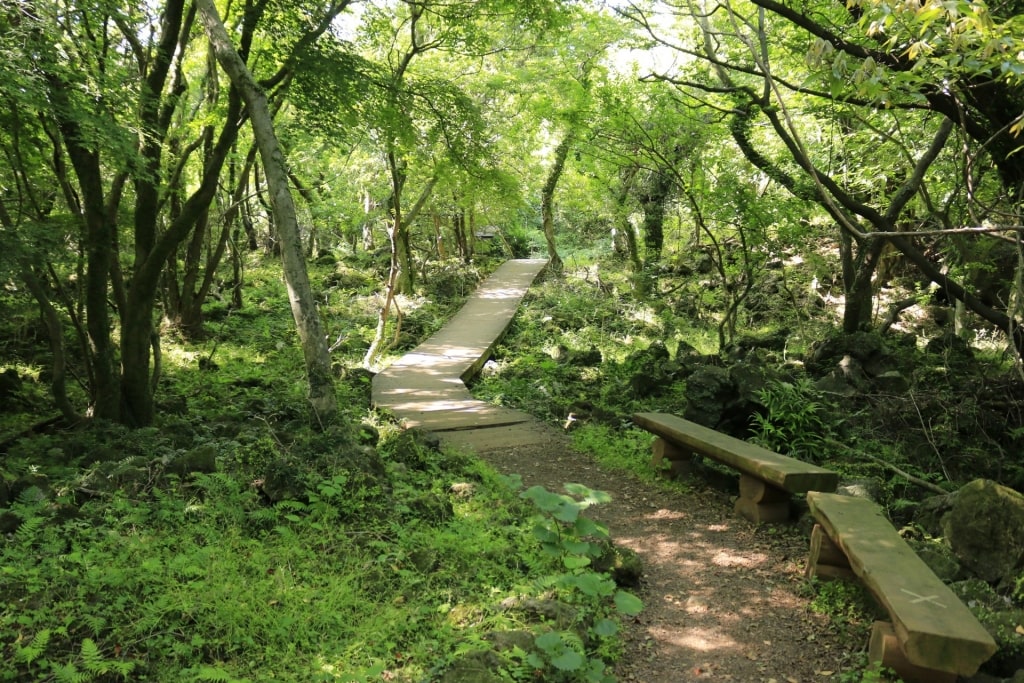
Gotjawal Forest on Jeju Island, Korea
Visiting the lava-formed Gotjawal Forest on the slopes of the volcanic Mt. Hallasan is one of the best things to do on Jeju Island.
The forest is festooned with a tangle of 600 species of jade-green plants and trees—such as ferns, conifers, and camphor laurel—that thrive in this largely untouched, volcanic microclimate.
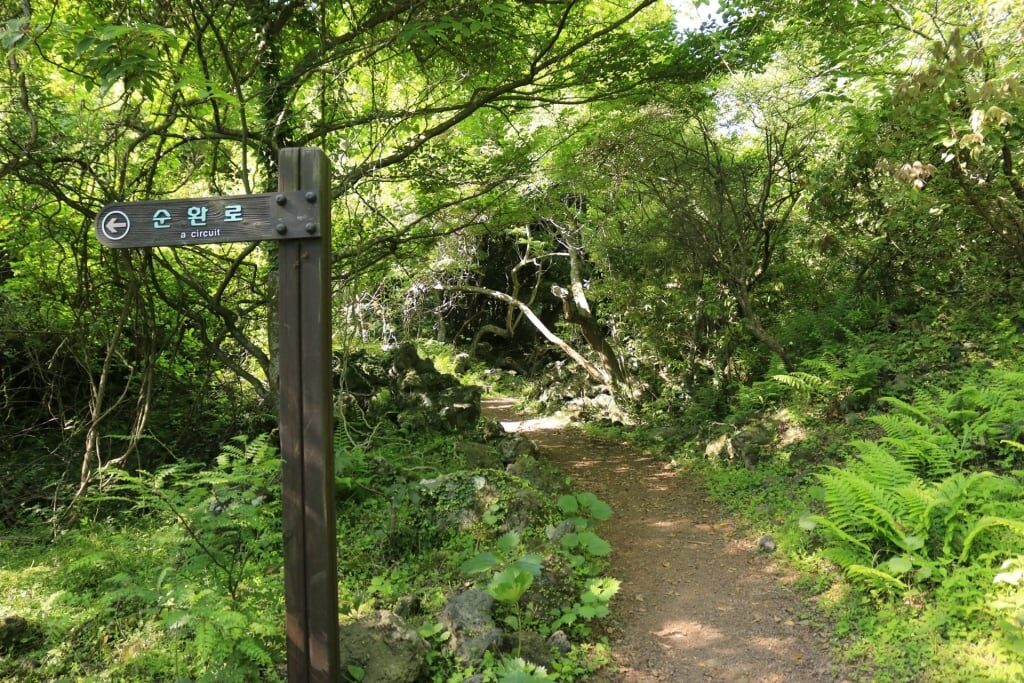
Gotjawal Forest on Jeju Island, Korea
Start with a visit to Gotjawal Provincial Park Visitor Center to learn about the lungs of Jeju Island and its ecological makeup, before climbing the Observation Deck to gaze across the treetops. A number of hiking routes are set out within the forest.
Look out for migratory birds, such as long-tailed flycatchers, and native species, such as the island warbler. Jeju salamanders, zebrafish (a type of reptile), and roe deer also roam Gotjawal.
After exploring the forest, tag on a visit to the Osulloc Tea Museum to discover local chai, a lotus pond, and rolling fields where tea is grown.
Tongass National Forest, Alaska
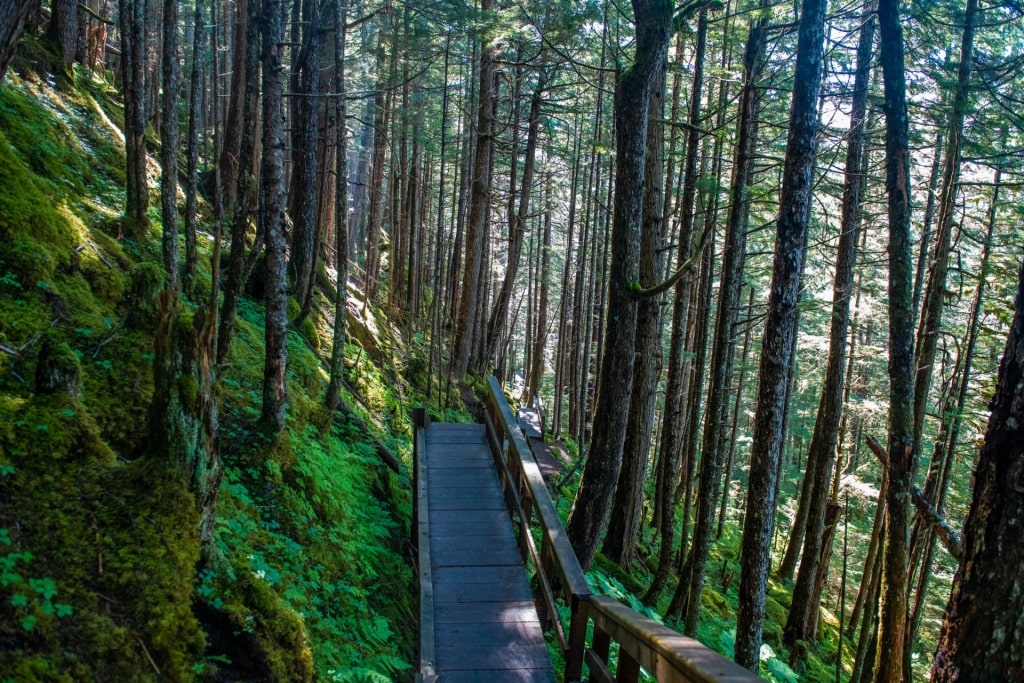
Tongass National Forest, Alaska
Dominating much of southeast Alaska, The Tongass, as it is known, is the largest national forest in the United States and the largest temperate rainforest in the world.
This vast northern wilderness boasts soaring mountains, deep fjords, and sky-blue glaciers, leaving the mighty Tongass’ status as one of the most beautiful forests in the world undisputed.
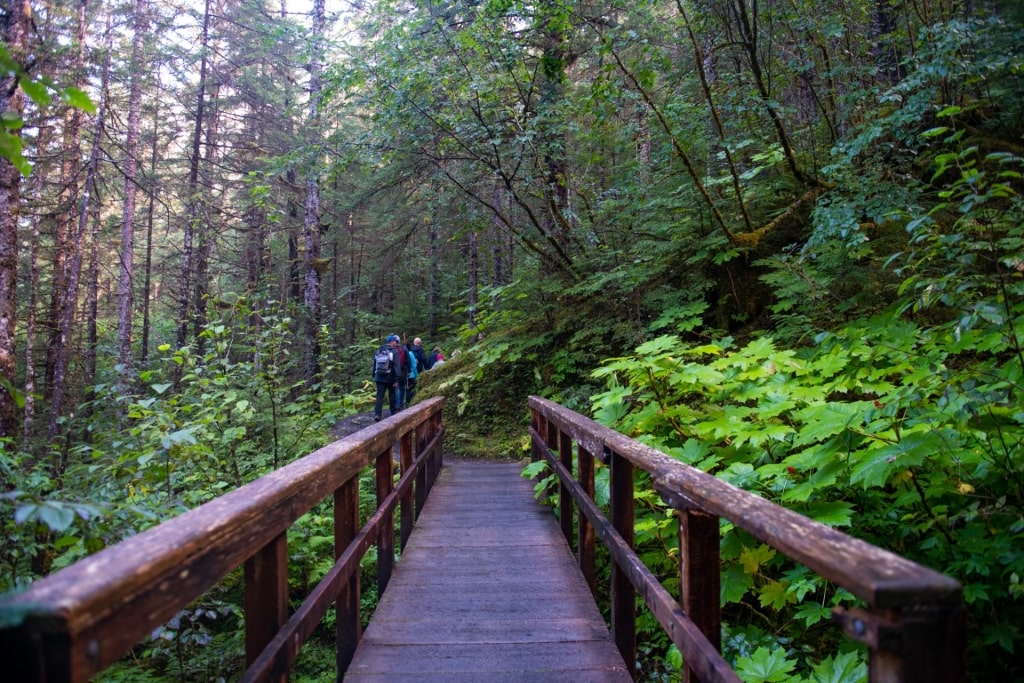
Tongass National Forest, Alaska
The vast old-growth forest, intertwined with red and yellow cedar, hemlock, and spruce, is home to black bears, bald eagles, and spawning salmon.
The bubbling streams, lakes, and rivers are also rich in halibut, Arctic grayling, rainbow trout, northern pike, burbot, and Arctic char.
Walk beneath The Tongass’ verdant rainforest canopy on an exhilarating Alaskan hike to take in delicious bays and islands, and cascading waterfalls. The Mosquito Cove Trail is an easy option, while the Indian River and Herring Cove trails are longer, more moderate options, all near Sitka.
Salmon season, between May and September, is the best time for bear sightings around the forest’s tumbling streams.
Waipoua Forest, New Zealand
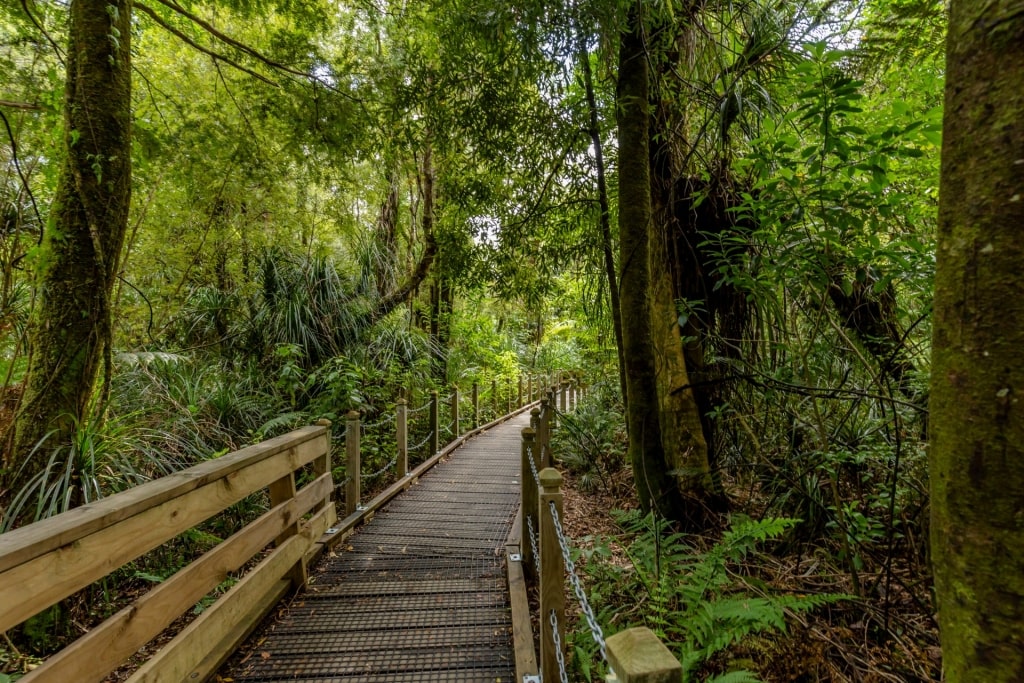
Waipoua Forest, New Zealand
Prepare to be dazzled on a trip to the serene Waipoua Forest, near the Bay of Islands on New Zealand’s North Island.
What makes Waipoua among the most beautiful forests to explore on vacation? It is home to
Tane Mahuta, also known as Lord of the Forest, a 2,000-year-old, indigenous kauri tree with a 14-foot diameter. It’s the largest known kauri tree in New Zealand, measuring 168 feet.
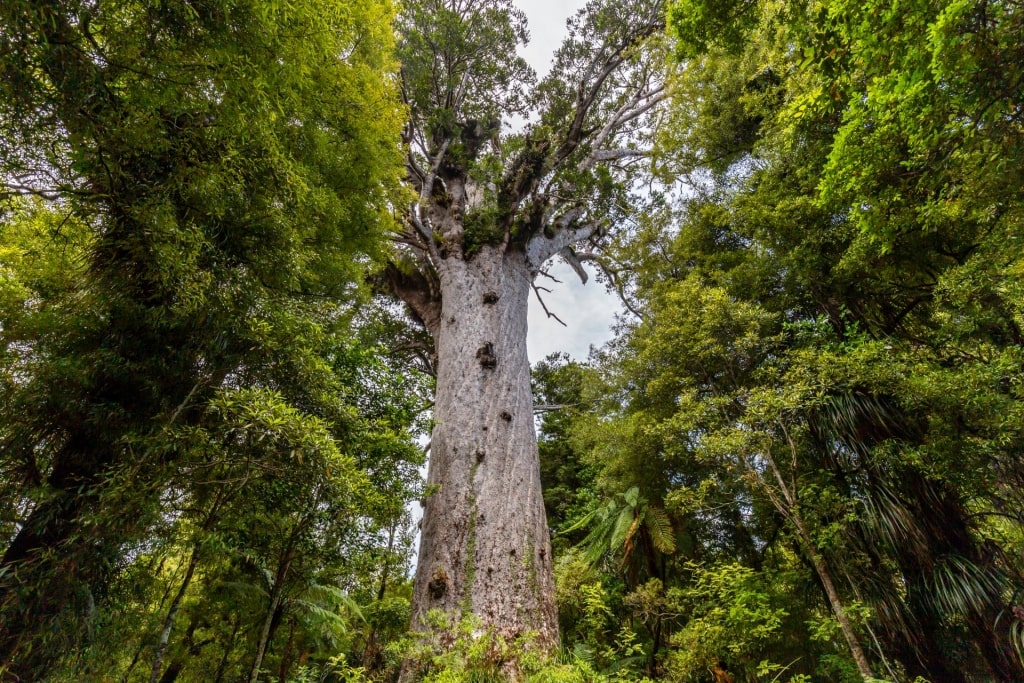
Tane Mahuta in Waipoua Forest, New Zealand
New Zealand’s Highway 12, or the Twin Coast Discovery Highway, cuts through this luscious forest, with ferns, palms, and kauri trees hugging the roadside. Tane Mahuta can be reached in just five minutes from the highway.
There’s also a 40-minute loop to see the second-largest kauri tree in New Zealand, Te Matua Ngahere, estimated to be between 2,500 and 3,000 years old.
The Great Trossachs Forest, Scotland
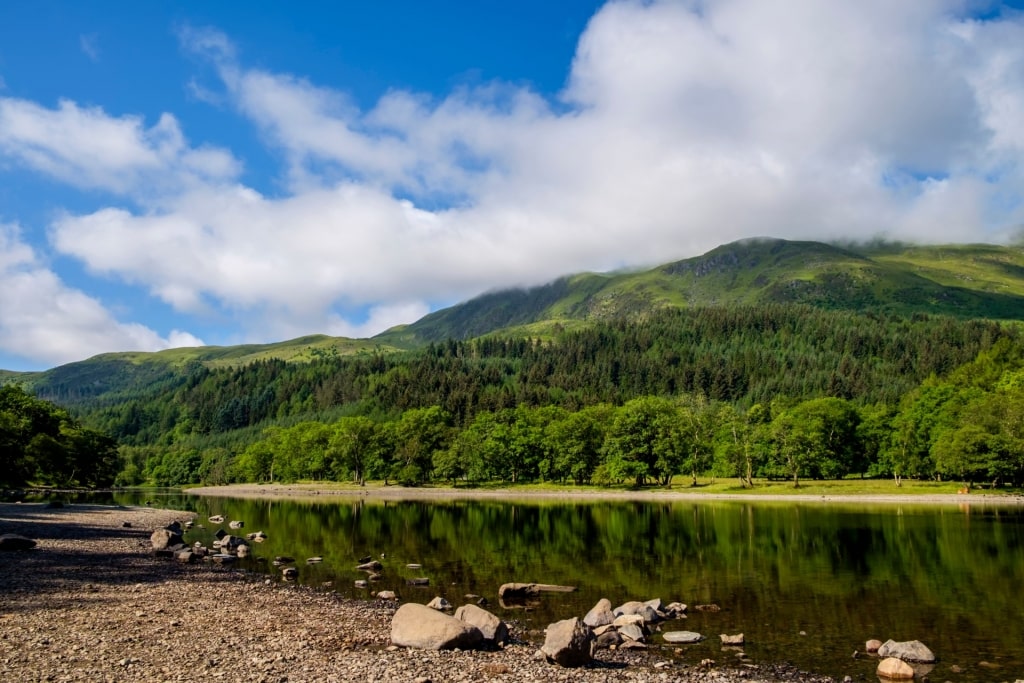
The Great Trossachs Forest, Scotland
Scotland is known for its beautiful landscapes, and the glorious Trossachs, part of Loch Lomond & Trossachs National Park, is a beguiling place of mountains, glens and lochs, centered around the expansive Loch Lomond.
The Trossachs is a habitat for red and roe deer, black grouse, pine marten, wood grouse, and goshawk, while the waters are home to a lively mix of swans, beavers, otters, osprey, perch, pike, and brown trout.
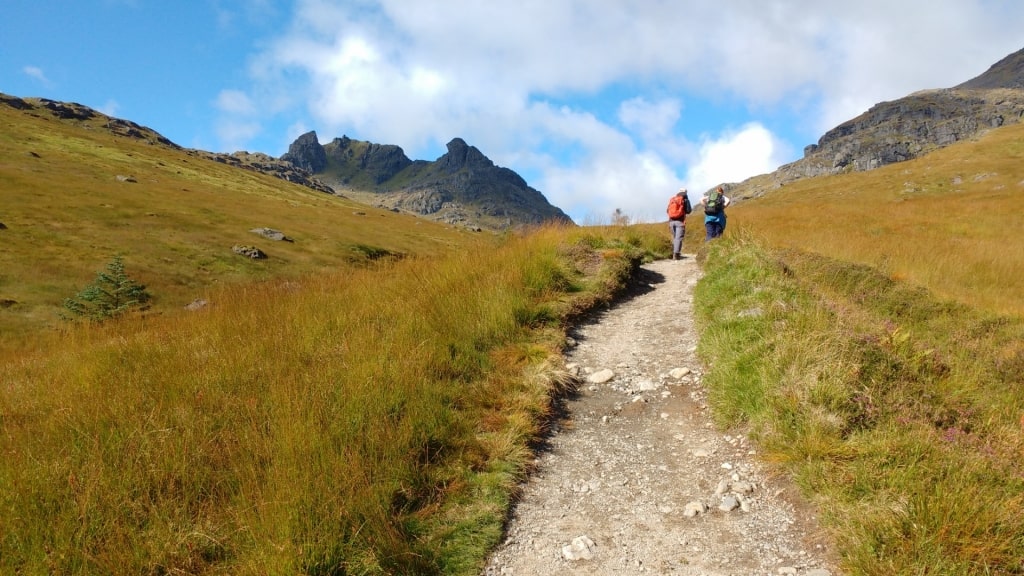
The Great Trossachs Forest, Scotland
There are 103 miles of short, medium, and long hiking routes within The Trossachs, including the 30-mile Great Trossachs Path, which runs between Inversnaid at Loch Lomond in the west and Callander in the east.
Try the one-mile Pine Ridge Trail that weaves through young pines for picturesque views of Loch Drunkie or the shorter Loch Achray loop through conifer woodland.
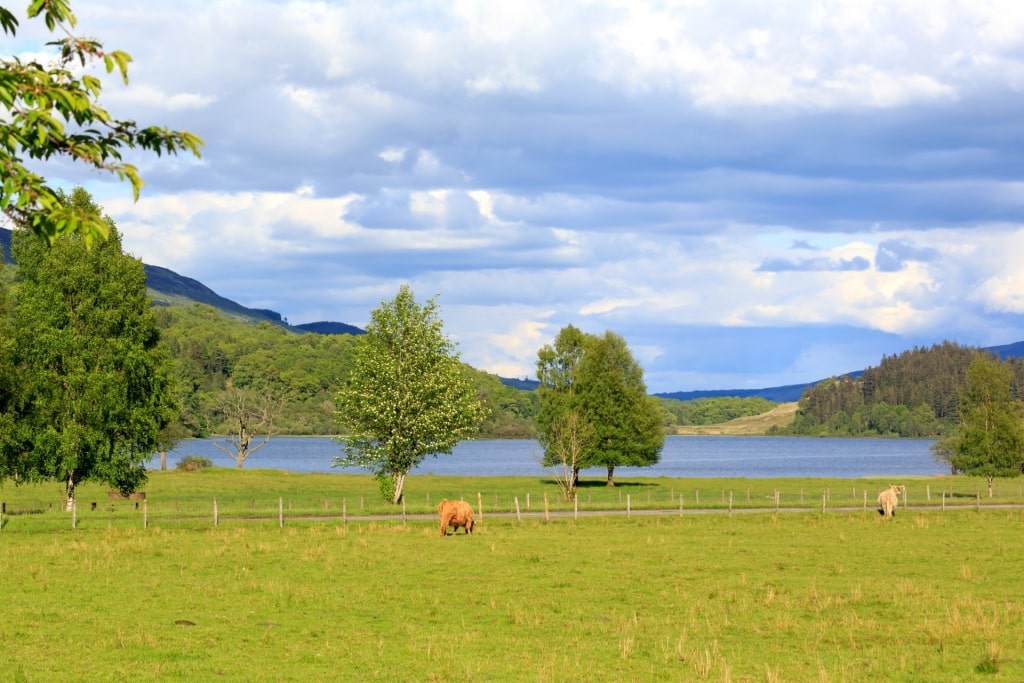
Loch Achray in the Great Trossachs Forest, Scotland
There’s a lovely small-batch ice cream parlor at Achray Farm, on the eastern edge of Loch Achray, which is open between May and October.
The farm uses seasonal produce, including foraged ingredients from The Trossachs, to create its artisan ice creams, with inventive flavors such as garden mint, meadowsweet, lavender and lemon balm, and elderflower. Enjoy delicious scoops while watching the farm’s goats grazing on dewy grass.
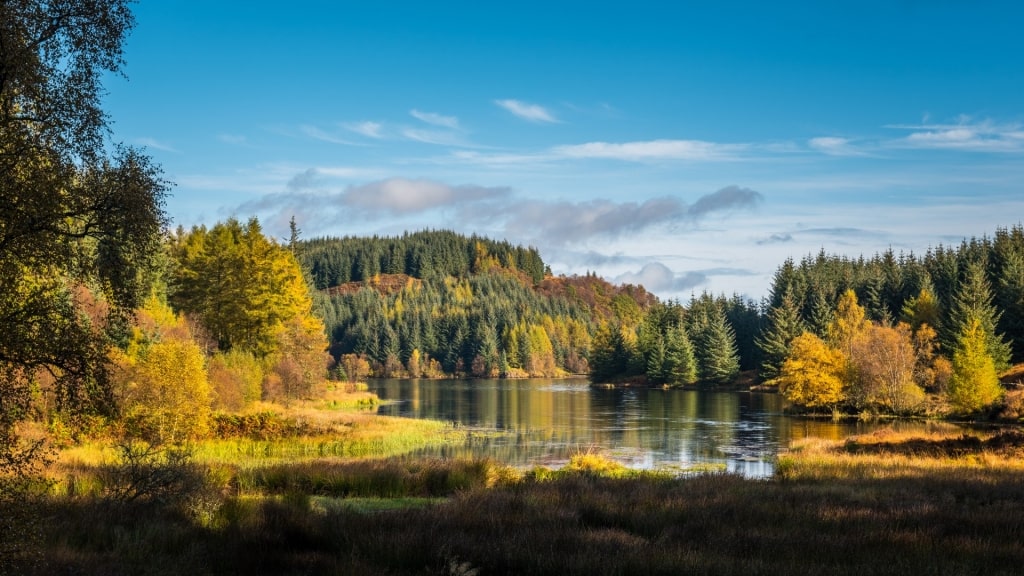
Loch Drunkie in the Great Trossachs Forest, Scotland
If you’d rather cover more ground without putting in the steps, consider the seven-mile Forest Drive, which takes in Lochan Reòidhte, Loch Drunkie, and Loch Achray.
With 22 lochs in Loch Lomond & Trossachs National Park, swimming, canoeing, kayaking, and paddleboarding are all possible, too.
Read: Best Hikes In & Around Glasgow
Mount Rainier National Park, Washington
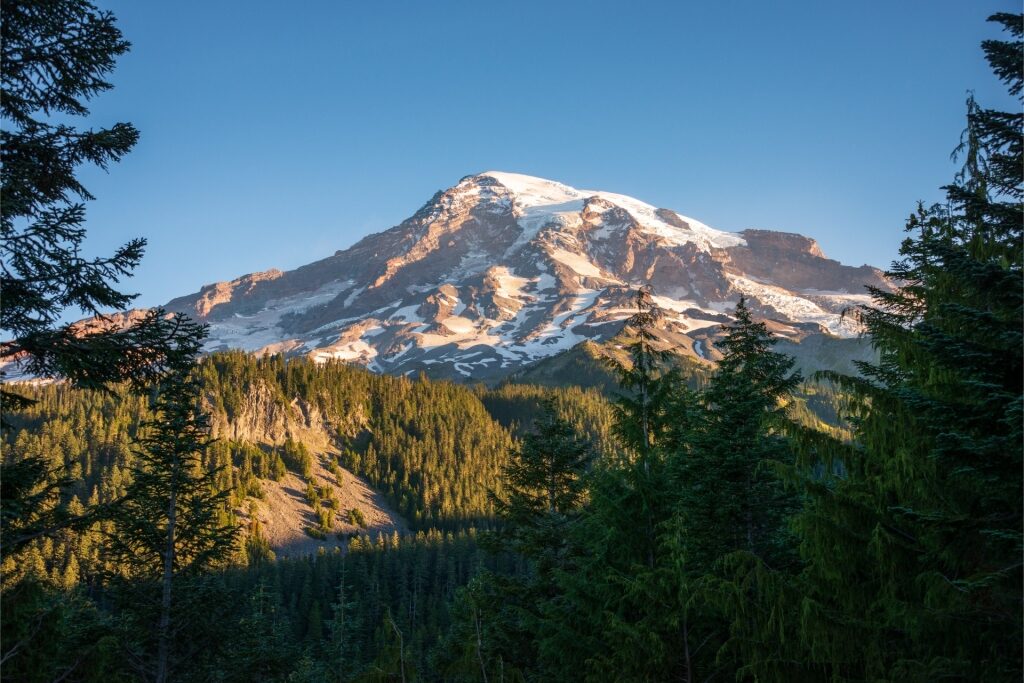
Mount Rainier National Park, Washington
Mount Rainier National Park is dominated by the snowy, brooding hulk of Mount Rainier itself, an active volcano some 14,410 feet high, which last erupted in 1854. Clearly visible from Seattle, Rainier is the tallest single peak in the lower 48 states.
The forests draped across its slopes are a playground for city-dwellers, who come here for hiking, mountain biking, camping, and in winter, skiing.
With so many climate zones from its base to the summit, you’ll find a remarkable array of ecosystems on this mighty mountain. The lower slopes, below 3,500 feet, are dense with ancient forest, comprising western red cedar, Douglas fir, and hemlock, home to dozens of species of birds. You could see elk, bears, Columbian black-tailed deer, and Douglas squirrels, too.
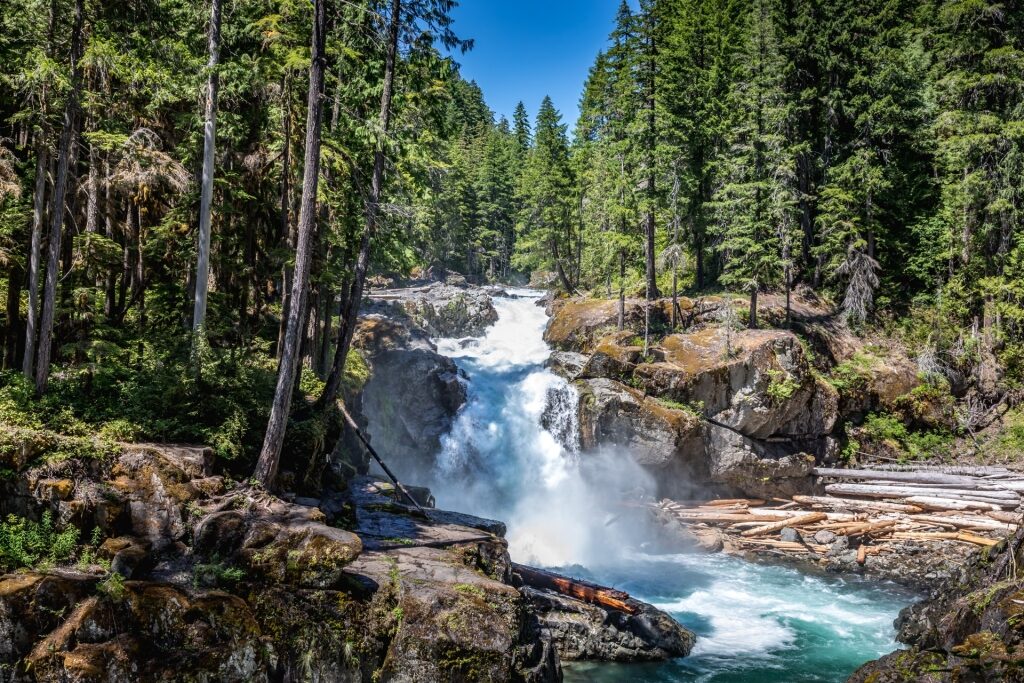
Mount Rainier National Park, Washington
From here up to around 5,000 feet, the trees change to western hemlock, western white pine, and Pacific silver fir. Above this altitude, the forest gives way to subalpine meadows carpeted with wildflowers, a bird-watcher’s dream in summer, when dozens of species of bird come here to feast on the insects that are in turn feeding on the flowers.
There are some 240 miles of maintained trails in the park for all levels of fitness, as well as five major rivers and more than 100 waterfalls. As such, this forested region is a joy for hikers, although there’s plenty for the less energetic, too.
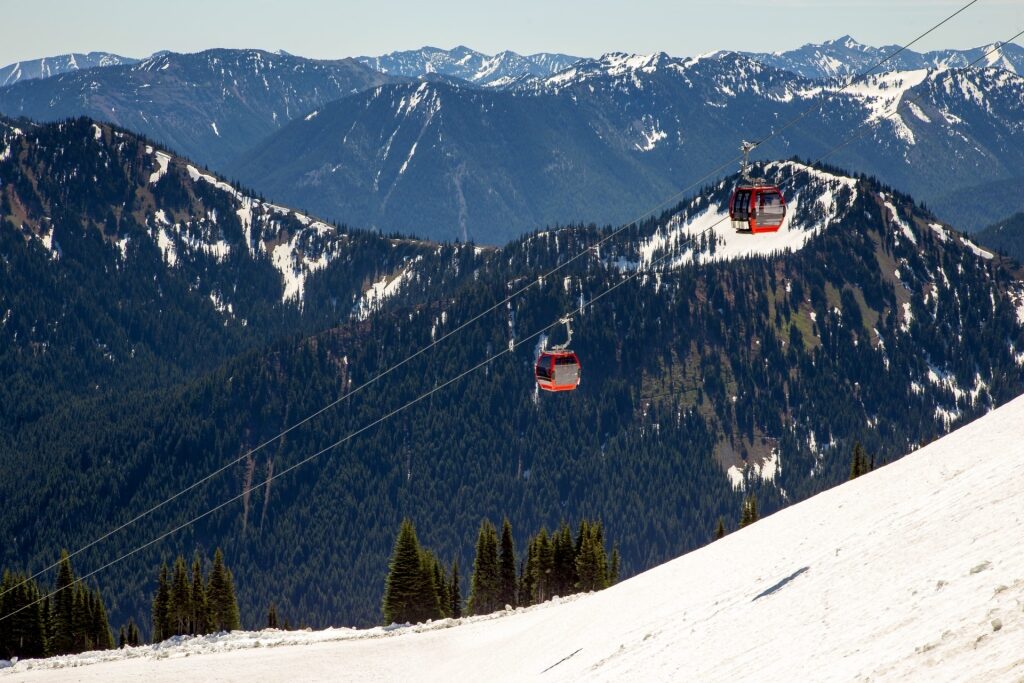
Mt. Rainier Gondola, Washington
Ride the year-round Mt. Rainier Gondola from the Crystal Mountain ski area just outside the northeast corner of the park. From the top, you’ll have breathtaking views over mile upon mile of bottle-green forest to icy Mount Rainier and the whole Cascades range.
Kenai Peninsula, Alaska
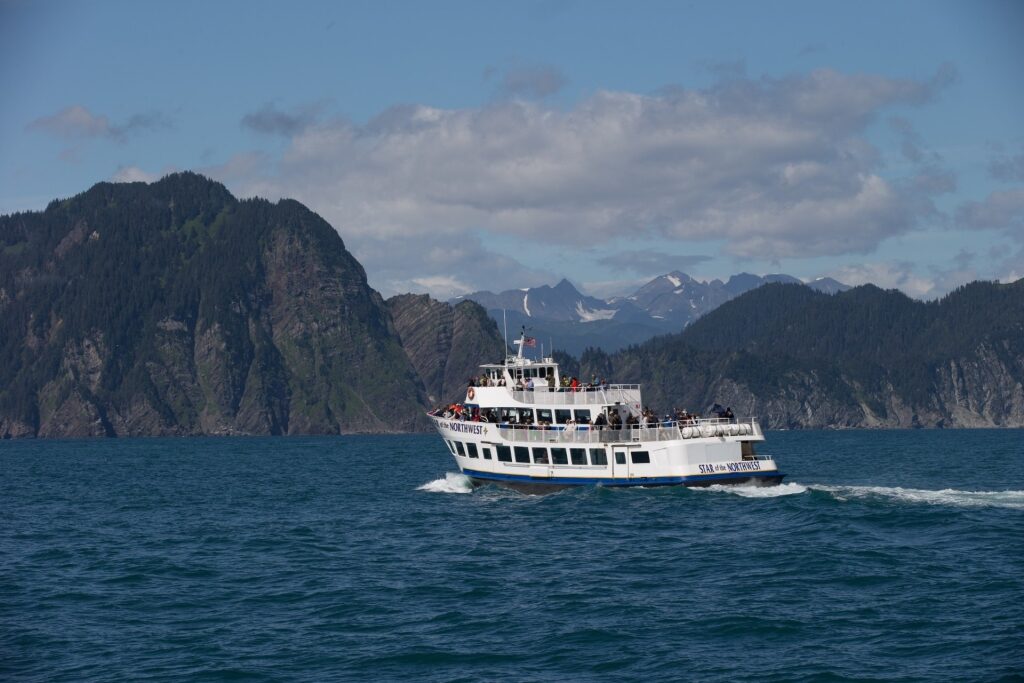
Kenai Fjords National Park, Alaska
Dense forest covers much of south-central Alaska’s Kenai Peninsula, which incorporates the Kenai Fjords National Park and the Kachemak Bay State Park. This is also a landscape of craggy, snow-capped mountains, blue-white glaciers, tundra, and lakes. Needless to say, then, the Kenai Peninsula is an outdoors lover’s paradise.
Seward is the gateway town to this magnificent wilderness. From here, you can explore the forested shorelines of the Kenai Fjords National Park, the waters rich in marine life, from gray, humpback, and minke whales to sea lions and otters.
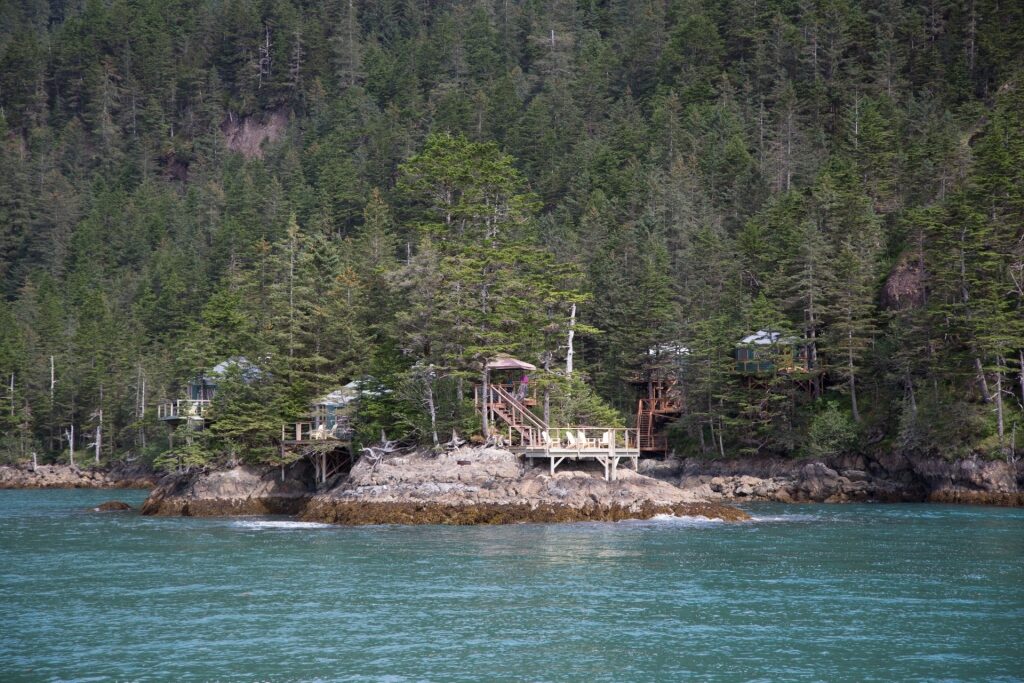
Kenai Fjords National Park, Alaska
The park is studded with tiny islands, many of them topped with trees, while the rocky, log-strewn beaches are the ideal place to spot foraging bears or mountain goats clambering on the rocks.
Much of the northeastern quadrant of the peninsula, between Anchorage and Seward, is occupied by the enormous swathe of the Chugach National Forest, the second largest forest area in the U.S., at 6.9 million acres, larger than New Hampshire.
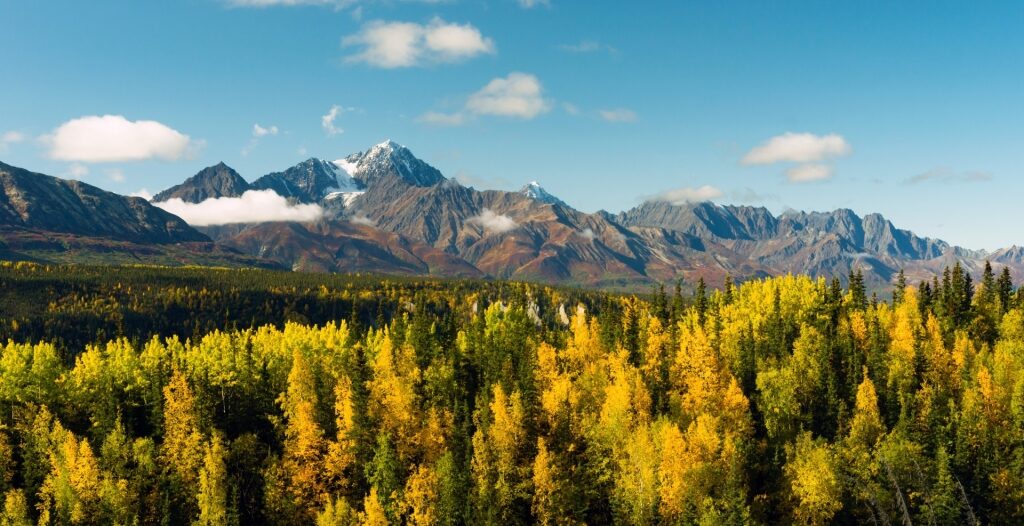
Chugach National Forest
The forest incorporates an enormous variety of habitats, from boreal woods to rainforest and wetlands, while 20 tidewater glaciers edge their way down from the mountains to the sea within its boundary.
This is a place for hiking, biking, and wildlife viewing. You could see Dall sheep, black bears, moose, bald eagles, and mountain goats here, and in spawning season, thousands of salmon.
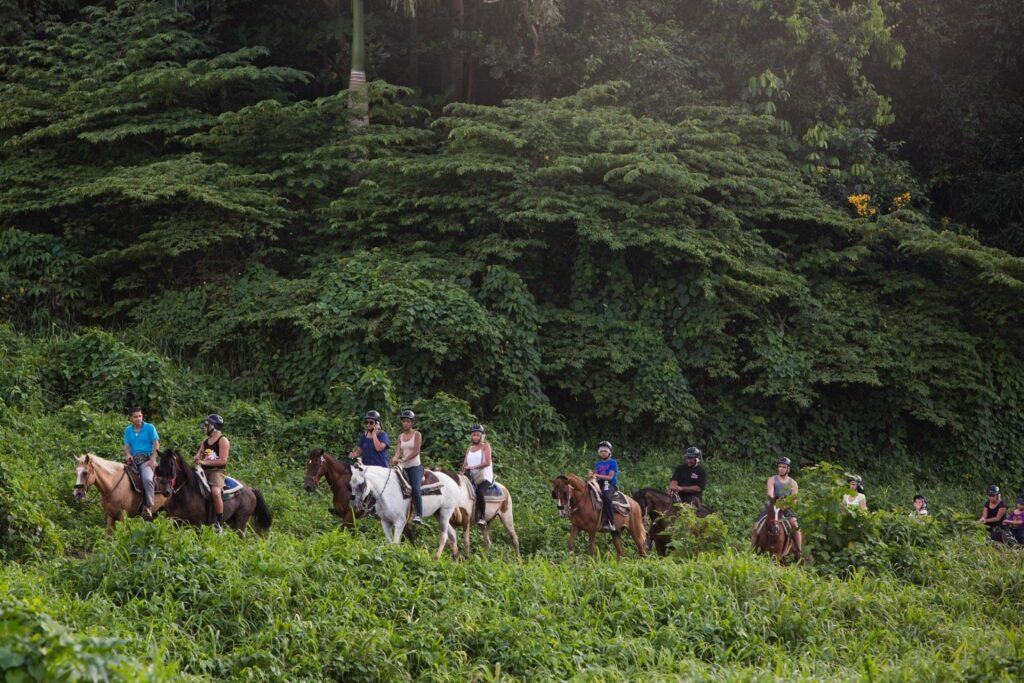
El Yunque Rainforest, Puerto Rico
A cruise is one of the best ways to experience the world’s most enchanting and beautiful forests.
Explore Celebrity Cruises’ itineraries, from the British Isles to Australia and New Zealand, as well as closer-to-home destinations such as Alaska and Costa Rica, to book your next getaway.
